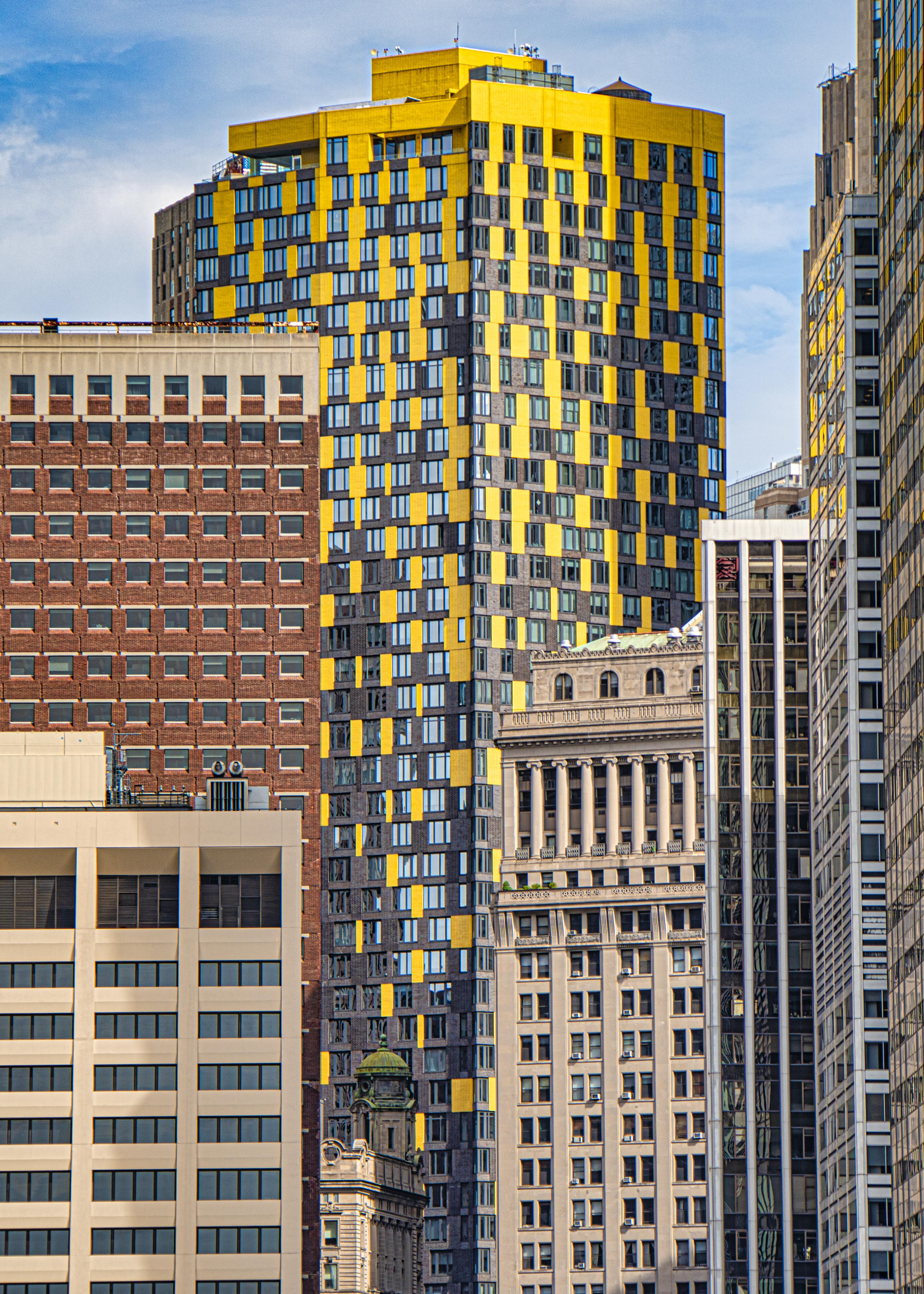Professor Glenn Goldman Exhibit at the Littman Library
Professor Glenn Goldman’s exhibition Color and Composition, The (Mostly Architectural) Photography of Glenn Goldman at the Littman Library opened on February 14th. The exhibit features photographs that were mostly taken over the last six years, and have been cited or received awards at various competitions.
The exhibit presents Goldman’s work in two very different ways. The printed exhibit display, curated by Elizabeth Kawalchuk, is organized as if it were a three dimensional graphic design project and Goldman’s photographs were the pieces that could be moved around in a mosaic to compose all of the display’s walls. The other way to look at the exhibit is the electronic slideshow that was put together by Goldman. It is more extensive than the printed exhibit, uncropped, grouped by type and has location information.
From the first award at the New Jersey AIA annual competition to the most recent 2022 MUSE Photography Awards for Canterbury Cathedral, Goldman has received more than 600 citations or awards in national and international competitions for more than 120 photographs.

A photographer since childhood, Goldman received his first SLR camera as a high school graduation present from his parents. Having a keen eye for details, Goldman finds his subjects in almost anything. “The same eye that looks for details in a building, looks for details of portions of an animal. When I'm photographing in nature or trying to get a picture of the whole building, that's no different than trying to get a photograph or compose a photograph of a zebra in the zoo. There's a lot to see. I certainly go and try to find good buildings and good examples of architecture. But even when I'm walking around in a city, there are things you just have to notice, patterns, such as a photograph in the exhibit called the Post-It Building. You just have to notice these things. And in terms of the right perspective and the right view, I think that both have to do with the way you compose things. Some of it is clearly personal and reflects the way I look at the world. But it's also a function of how I've done everything, putting everything together,” Goldman said.

According to Goldman, what makes a photo powerful is determined by the people who look at it. Does it affect them? Does it force them to look at things in a different way, or see things that they haven't seen before? Is there an emotional connection with what they see? “Certainly with people or animals you know what happens with the eyes, so is there an emotional connection? But in terms of buildings sometimes it's geometry. Sometimes it's just something different or something you're not expecting. Sometimes it's so dense with detail and visual texture, and that’s what makes it powerful,” said Goldman.
All of the photos are taken without the use of tripod or flash. “Sometimes you have to take more than one shot to make sure that something comes out right. There's one photograph of looking up at the fan vault in Canterbury Cathedral, I just stood right in the middle, right underneath it, and I took photographs for 15 minutes and my wife was incredibly patient. I took about 50 shots in that time of one subject from which I chose the best one to complete the post-processing for the final photograph,” said Goldman.
As a professor at the School of Art and Design, Goldman uses his photographs to teach in his classes. “I am very often consciously taking photographs that illustrate design principles,” Goldman said.
Goldman’s favorite photos are not on display at the exhibit – they are on his phone, photos of his grandchildren. “Those are the ones I like to look at the most. They're not great photographs, but they mean a lot to me and they make me happy when I look at them. That's better than any architectural photograph that I have. I have some other photographs that I really like. There are photos of my wife in some of the exhibited pictures - she often serves as my "scale figure" in some of my photographs of buildings and she has been with me when I photographed at least 2/3 of the images exhibited. Also, my favorite photographs will be the ones I've not taken yet. There are many places and buildings I still want to see, and those will become subjects of future photographs. The other reason is that I hope my photos keep getting better, so that there will be photographs that I will take in the future that are better than anything I've taken so far.,” Goldman said.